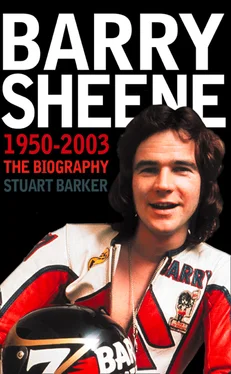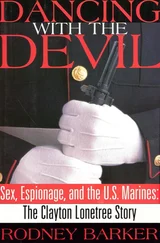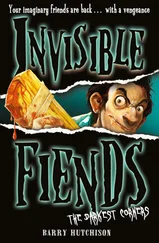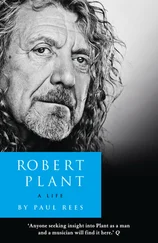With Sheene’s reputation having taken a bit of a battering, he was really out to prove himself in 1973. He had a new contract with Suzuki and a new championship challenge beckoned: the FIM Formula 750 European Championship, in many ways the predecessor of the current World Superbike Championship. The Formula 750 Championship was, to all intents and purposes, a world championship even though it didn’t enjoy the prestige of being conferred with official world-class status. The calendar of dates was just as gruelling as the Grands Prix, and the calibre of riders almost as impressive.
The new breed of 750cc superbike racing had taken off in America in the early seventies and reports had reached Sheene that Suzuki’s new three-cylinder 750 had been clocked at 183mph in testing – allegedly the fastest speed ever attained by a race bike at that time. Sheene couldn’t wait to get his hands on one. Despite the fact that he had cut his teeth in 125 and 50cc racing, he now referred to the smaller-capacity bikes as being very ‘Mickey Mouse’ and was determined to prove he could win in the world’s largest-capacity racing class on what he considered ‘real men’s bikes’. Sheene duly got a Suzuki triple from the US where his brother-in-law, Paul Smart, would be racing one. Smart had been an arch rival of Sheene’s over the past few years but the pair had continued to have a friendly relationship. Barry had been as pleased as anyone when Paul tied the knot with his sister Maggie at the end of 1971, a marriage that still stands today and which produced current racer Scott Smart, Sheene’s nephew.
When Barry eventually took delivery of his new Suzuki it was immediately apparent to him that it was not the exotic piece of machinery he had been expecting. Much midnight oil was burned as he slotted the engine into a Seeley chassis and rebuilt the bike to a more competitive spec. In the end, his hard work paid off. Despite winning only one round of the eight-round championship, Sheene’s two second places, a third and a fourth meant he accumulated enough points to win the title ahead of Australian Jack Findlay, John Dodds and his own team-mate Stan Woods. Of the remaining rounds, he had two non-finishes and was disqualified from the British round at Silverstone for switching bikes between the two race legs. It was Sheene’s most prestigious championship win to date, and he proved that he really had mastered larger-capacity machines by adding the Motor Cycle News Superbike title, Shellsport 500 title and King of Brands crown to his collection.
Sheene was now really starting to make a name for himself, not only as a racer but as a great PR man and a bit of a grafter, as John Cooper explained: ‘Barry was always a very determined chap. He worked on his bikes a lot and they were always nicely prepared and presented. He used to try hard and he was very professional. Preparation is the thing with bikes, and he was always keen, fiddling about, changing the sprockets, altering the forks and the springs – not like today when riders just come in the paddock and dump their bikes on their mechanics. He wasn’t shy of grafting. Years later I used to go down to his house when he lived at Charlwood and all his spanners were laid out neatly in his workshop and his helicopter sat there all nice and clean. He was very organized.’ Cooper, like Chas Mortimer, had known Sheene long before he started racing and was happy to help Frank’s boy in any way he could. ‘We used to help each other out, lending each other bikes and stuff; you know, we were just friends really. But he didn’t need much steering because he always had the makings of being the right man for the job, and that was apparent even in the early days.’
After such a disappointing year in 1972, Sheene was most definitely back. Readers of MCN recognized his achievements by voting him their Man of the Year for the first of five times in his career – a record that stood for almost two decades until Carl Fogarty accepted the award for a sixth time in 1999. Moreover, Sheene’s F750 victory was enough to convince Suzuki that he deserved a ride on their all-new RG500. The four-cylinder, 500cc Grand Prix weapon was to become a racing legend in its own right, winning four world titles between 1976 and 1982, but in those early days it was an absolute beast to ride, all power and no handling. When Sheene first tested the bike in Japan at the end of 1973, he found, like everyone else who had ridden it, that the bike had a nasty habit of weaving viciously at speed and pulling wheelies under power, but it was still the fastest bike he’d ever ridden and he proved it by knocking one and a half seconds off the Ryuyo track record in tests.
The plan for 1974 was not only to defend his Formula 750 title but, more importantly, to contest every round of the ultimate motorcycle series – the 500cc Grand Prix World Championship. It would be Sheene’s first ever year in the premier class and he knew the RG500 was up to winning races once the handling was sorted out. But that was easier said than done, and 1974 was to prove a tough baptism for Sheene. The gremlins in the RG’s handling were never truly rooted out that season, and the bike was further plagued by mechanical faults, as most new machines are. Gearboxes and drive shafts were particularly prone to breaking, and Barry had his fair share of crashes, which only added to his problems.
The first outing for the bike was in March at the Daytona 200 race in Florida. It was Barry’s first time there as well as the Suzuki’s, and that meeting inadvertently led to Sheene adopting the now famous number seven. As he told me during an interview for Two Wheels Only magazine, ‘Seven was always my favourite number even as a kid. I’d want seven this or seven that. Then, when I went to Daytona in 1974, I asked what numbers were available. The Americans usually give new riders really high numbers, but Mert Lawill had retired so seven was available. I was well chuffed.’ The lucky number seven wasn’t the only thing Sheene took away from the States. He also latched on to the American habit of displaying the number for all to see while brightening up his racing attire, too. ‘The Americans made you wear your number on your helmet and leathers too, which was even better, and I kept the look when I got back to Europe afterwards.’
It was just as well that Barry brought something away from Daytona because ignition trouble ruined his chances of getting a result in the race. After that, a fine second place in the first Grand Prix of the year proved to be a false indicator of what to expect. Along with most of the other riders, Sheene sat out the German race in protest at the lack of straw bales surrounding the course, then finished third in Austria after suffering the humiliation of being lapped by Giacomo Agostini and Gianfranco Bonera. Four consecutive non-finishes followed for the fast but fickle Suzuki, and a fourth place in the final Czech round was little consolation for a bitterly disappointing 500cc GP debut season in which Sheene had managed to finish only sixth overall. The defence of his Formula 750 title had been a bit of a wash-out too; Barry hadn’t really had time to concentrate on that series as well as the Grands Prix and had had to give second best to the new, super-fast Yamahas. There were brighter moments, though, like scoring the RG500’s debut win at the British Grand Prix, even though it was a non-championship event and as such shouldn’t really have been called a Grand Prix at all. Barry also won the Mallory Park Race of the Year as well as the Motor Cycle News Superbike Championship and the Shell Oils 500 title, salvaging some home pride after a difficult year.
Suzuki were extremely disheartened, though, and ready to throw in the towel with the RG500 project until Sheene insisted on spending five gruelling weeks in Japan working on the bike to turn it into a winner. By the time he was through, Sheene was convinced he could challenge for the 1975 World Championship. But first there was the Daytona 200 to think about, and this time it would make him an international superstar – for all the wrong reasons.
Читать дальше












